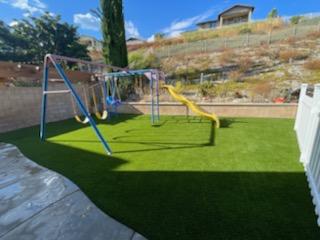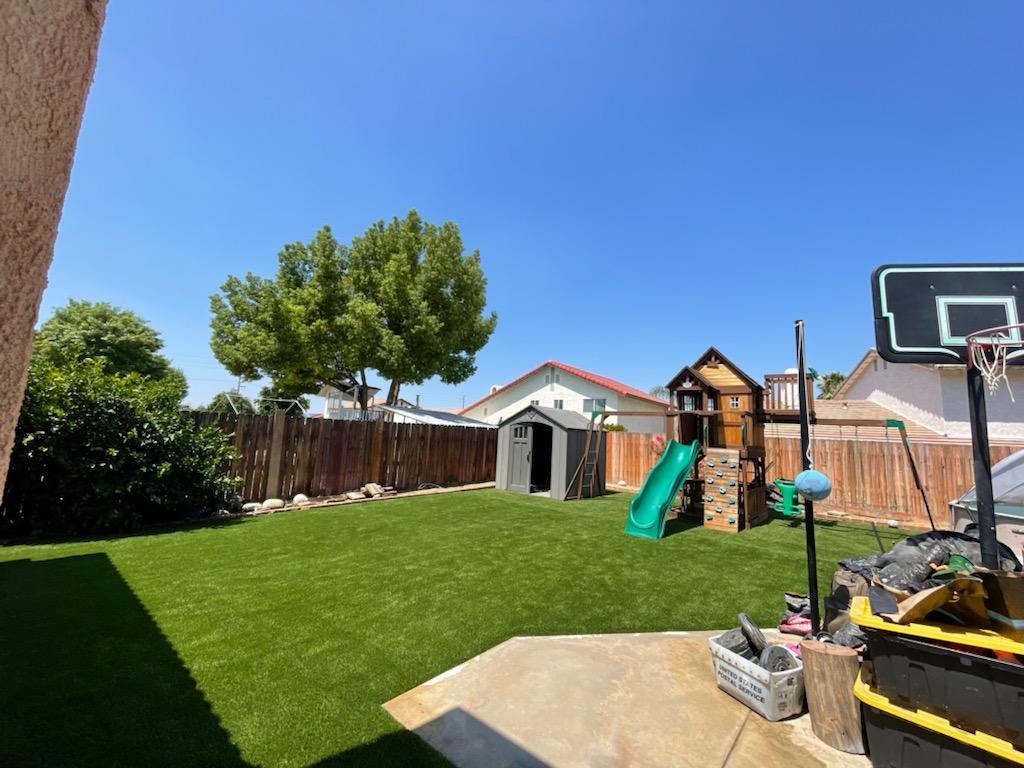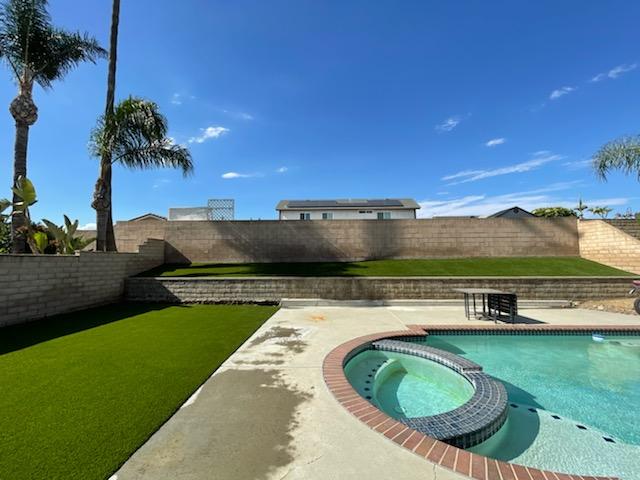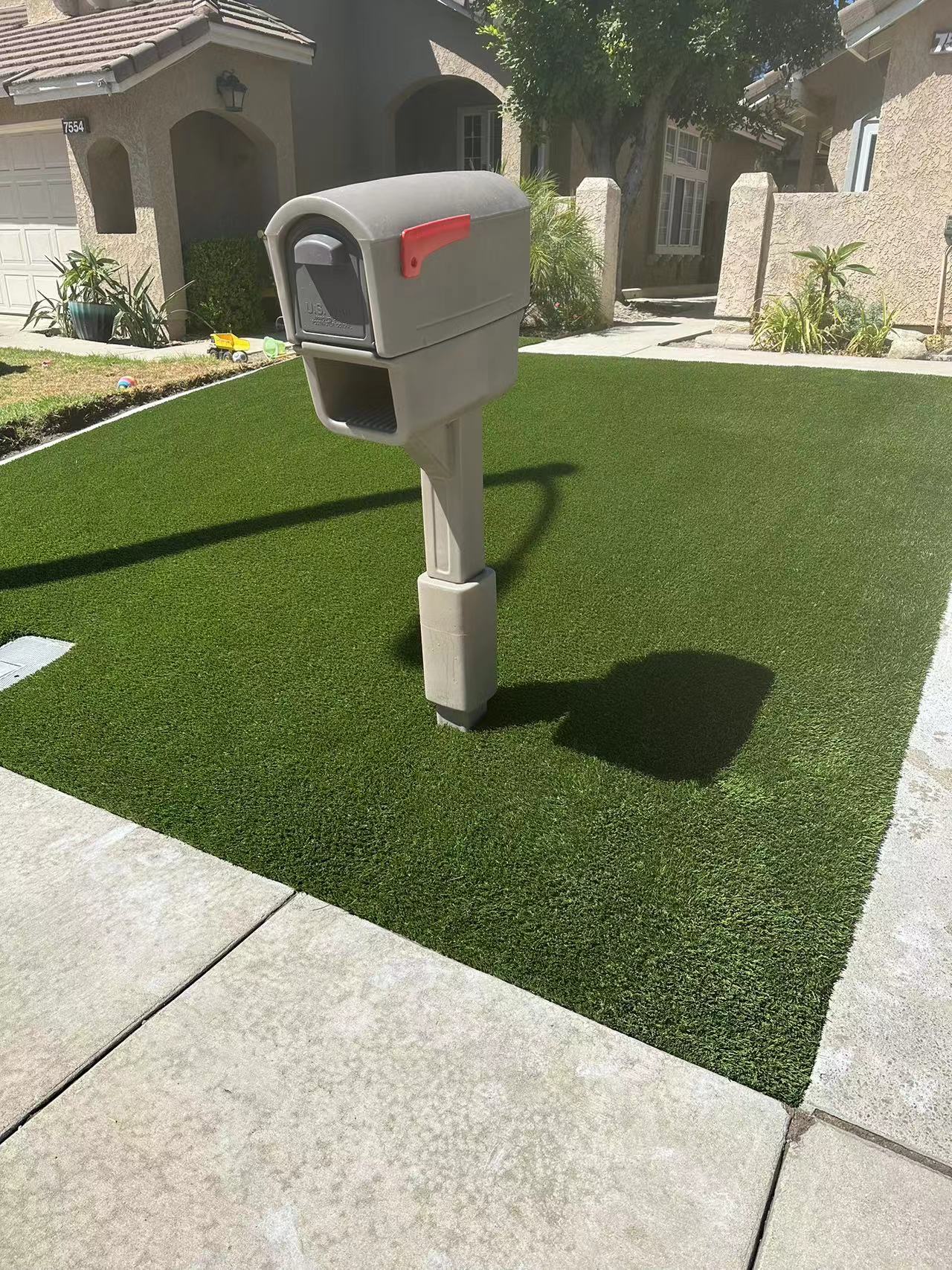1. Installation Process:
- Preparation: Before installation, the existing grass and weeds are removed. The soil is then leveled and compacted.
- Base Installation: A base layer of crushed stone or gravel is added and compacted to provide stability and drainage.
- Laying the Turf: The artificial grass is carefully laid over the prepared surface, ensuring it fits correctly.
Infill Material: Infill, such as sand or rubber granules, may be added to improve stability, resilience, and longevity.





2. Types of Artificial Grass:
- Nylon: Known for durability and resilience, but it can have a stiffer feel.
- Polyethylene: Offers a softer texture and is more natural-looking. It's a common choice for residential lawns.
- Polypropylene: Generally used for putting greens and play areas. It is less expensive but not as durable as other types.
3. Maintenance Tips:
- Regular Cleaning: Sweeping or using a leaf blower to remove debris and leaves helps maintain the appearance.
- Rinsing: Occasional rinsing with water helps prevent odors and keeps the surface clean.
- Brushing: Brushing the turf against the grain can help restore its appearance and prevent matting.
4. Pet-Friendly Artificial Grass:
- Specially Designed Turf: Some artificial grass is designed with pets in mind, incorporating antimicrobial properties and efficient drainage.
- Easy Cleanup: Pet waste can be easily removed, and the turf can be rinsed or hosed down.
5. Lifespan and Warranty:
- Lifespan: Well-maintained artificial grass can last 15 years or more, depending on usage and quality.
- Warranty: Manufacturers often provide warranties ranging from 8 to 15 years, covering issues like fading and durability.
6. UV Resistance:
- UV-Stabilized Products: High-quality artificial grass is often UV-stabilized to resist fading caused by prolonged exposure to sunlight.
7. Cool-Down Technology:
- Innovations: Some artificial grass products feature cool-down technology, such as reflective pigments, to reduce surface temperatures.
8. Local Regulations and Permits:
- Check Local Regulations: Before installation, check with local authorities regarding any regulations or permits required for artificial grass.
9. Professional Installation vs. DIY:
- Professional Installation: While it might incur additional costs, professional installation ensures proper groundwork and longevity.
- DIY Installation: Some homeowners opt for DIY installation, especially for smaller areas. However, attention to detail is crucial.
10. Environmental Considerations:
- Recyclability: Some artificial grass products are recyclable, contributing to sustainability efforts.
- Water Savings: The water conservation aspect of synthetic turf aligns with efforts to reduce water usage in landscaping.
Tags
Installation Process Base Installation Laying the Turf Types of Artificial Grass Regular Cleaning Pet-Friendly Artificial Grass Lifespan and Warranty Local Regulations and Permits
time:2023-11-22
